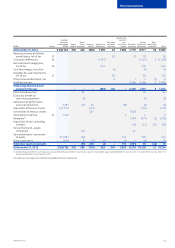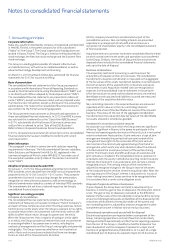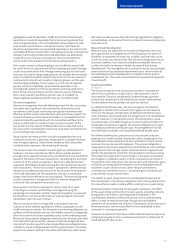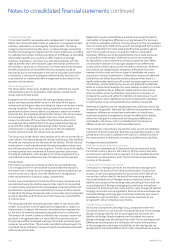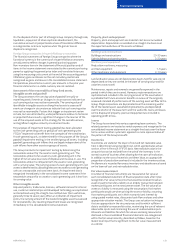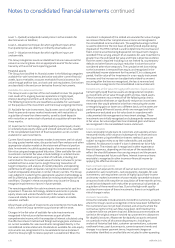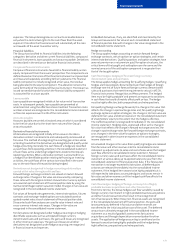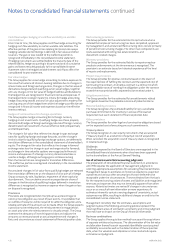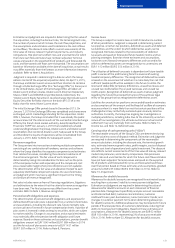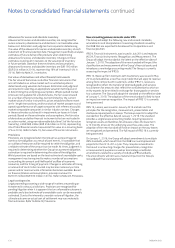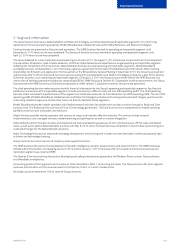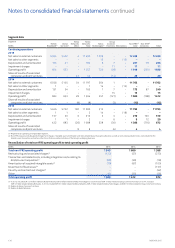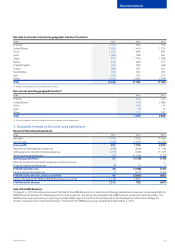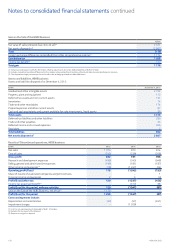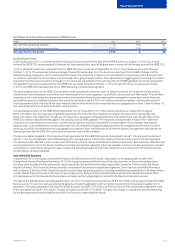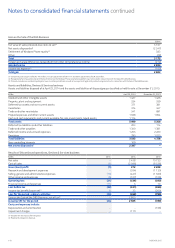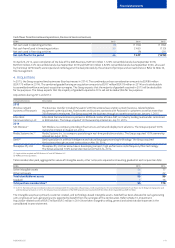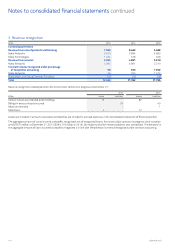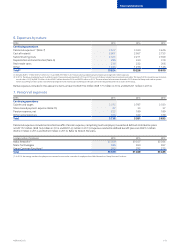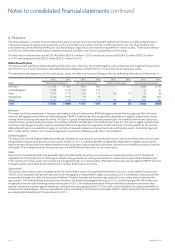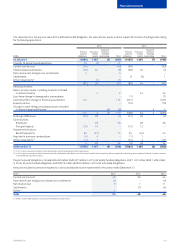Nokia 2015 Annual Report Download - page 137
Download and view the complete annual report
Please find page 137 of the 2015 Nokia annual report below. You can navigate through the pages in the report by either clicking on the pages listed below, or by using the keyword search tool below to find specific information within the annual report.
135
Financial statements
NOKIA IN 2015
2. Segment information
The Group has two businesses: Nokia Networks and Nokia Technologies; and three operating and reportable segments in its Continuing
operations for nancial reporting purposes: Mobile Broadband and Global Services within Nokia Networks, and Nokia Technologies.
Two businesses are presented as Discontinued operations. The HERE business formed an operating and reportable segment until
December 4, 2015 when its sale was completed. The Devices & Services business formed an operating and reportable segment until
April 25, 2014 when its sale was completed.
The Group adopted its current operational and reporting structure in 2013. On August 7, 2013 the Group announced that it had completed
theacquisition of Siemens’ stake in Nokia Networks. Until then, Nokia Networks was reported as a single operating and reportable segment.
Following the completion of the transaction, Nokia Networks business has two operating and reportable segments, Mobile Broadband
andGlobal Services. On September 2, 2013 the Group signed an agreement for the Sale of the D&S Business to Microsoft. After receiving
shareholder conrmation and approval for the transaction at the Extraordinary General Meeting in November 2013, the Group has presented
substantially all of its former Devices & Services business as Discontinued operations and Nokia Technologies, previously a part of the Devices
&Services business, as an operating and reportable segment. On August 3, 2015 the Group announced the Sale of the HERE Business to a
consortium of leading automotive companies, comprising AUDI AG, BMW Group and Daimler AG. Subsequent to the announcement, the Group
has presented the HERE business as Discontinued operations. Refer to Note 3, Disposals treated as Discontinued operations.
The chief operating decision maker receives monthly nancial information for the Group’s operating and reportable segments. Key nancial
performance measures of the reportable segments include primarily non-IFRS net sales and non-IFRS operating prot. The chief operating
decision maker evaluates the performance of the segments and allocates resources to them based on non-IFRS operating prot. The non-IFRS
operating prot of Mobile Broadband, Global Services and Nokia Technologies excludes restructuring and associated charges, purchase price
accounting-related charges and certain other items not directly related to these segments.
Mobile Broadband provides mobile operators with exible network solutions for mobile voice and data services through its Radio and Core
business lines. The Radio business consists of 2G to 5G technology generations. The Core business has a comprehensive mobile switching
portfolio as well as voice and packet core solutions.
Global Services provides mobile operators with services to create and maintain eective networks. The services include network
implementation, care, managed services, network planning and optimization as well as systems integration.
Nokia Networks Other includes net sales and related cost of sales and operating expenses of non-core businesses, IPR net sales and related
costs, as well as the Optical Nokia Networks business until May 6, 2013, when its divestment was completed. It also includes restructuring and
associated charges for the Nokia Networks business.
Nokia Technologies focuses on advanced technology development and licensing and includes net sales from both intellectual property right
activities and technology licensing.
Group Common Functions consists of company-wide support functions.
The HERE business focused on the development of location intelligence, location-based services and local commerce. The HERE brand was
introduced for the location and mapping service in 2012 and on January 1, 2013 the Group’s former Location & Commerce business and
reportable segment was renamed HERE.
The Devices & Services business focused on developing and selling smartphones powered by the Windows Phone system, feature phones
andaordable smartphones.
Accounting policies of the segments are the same as those described in Note 1, Accounting principles. The Group accounts for inter-segment
revenues and transfers as if the revenues were to third parties, that is, at current market prices.
No single customer represents 10% or more of Group revenues.


